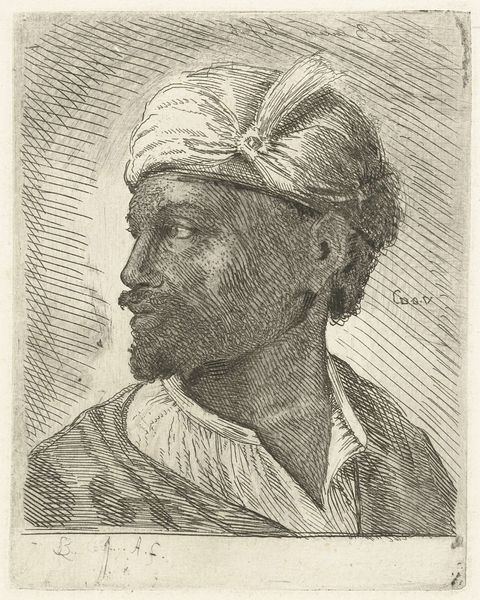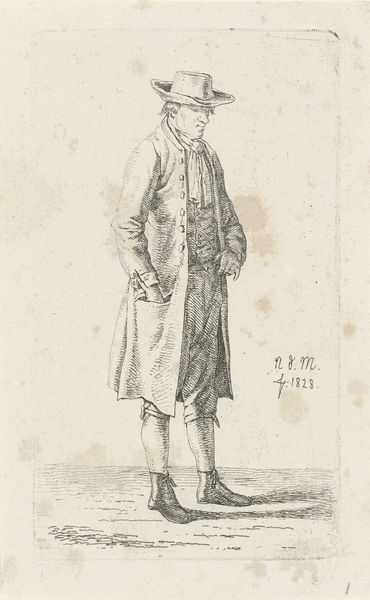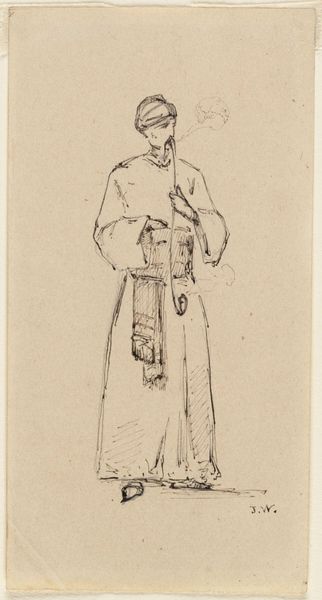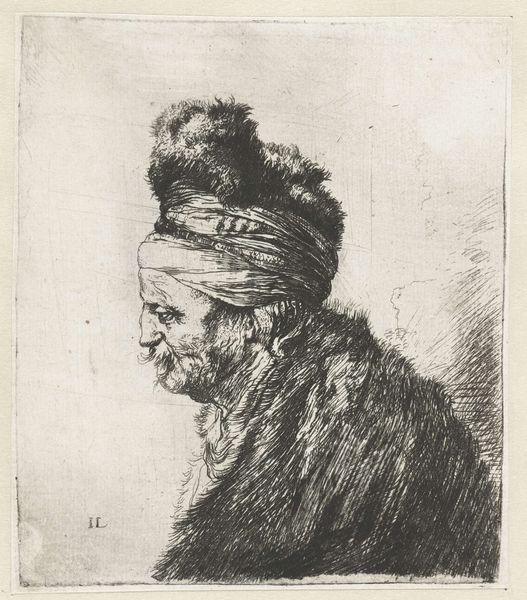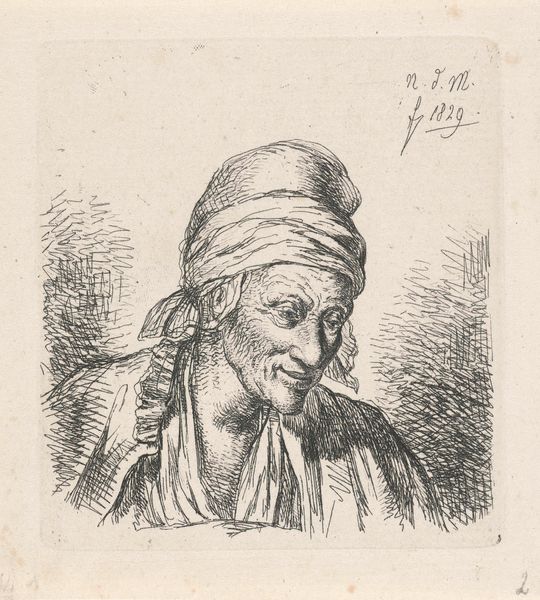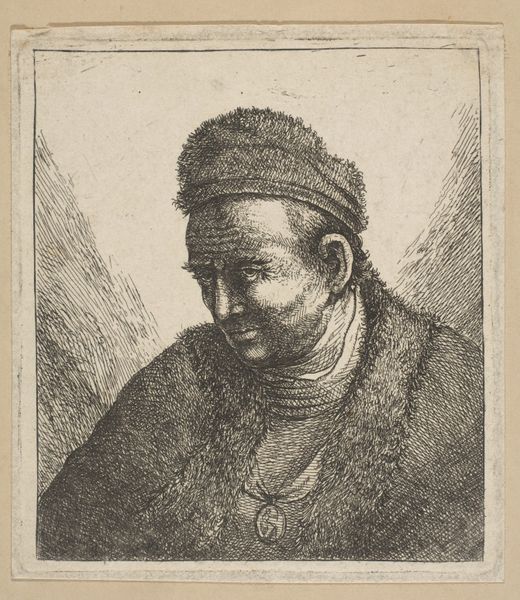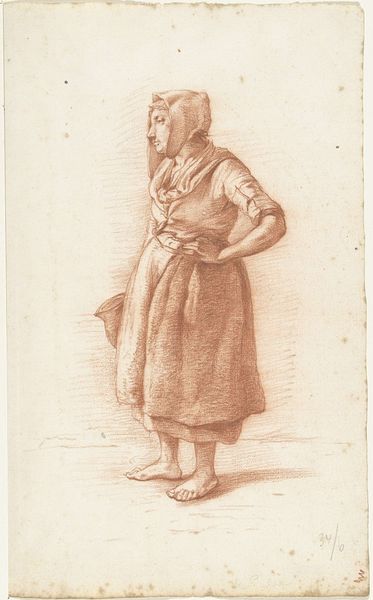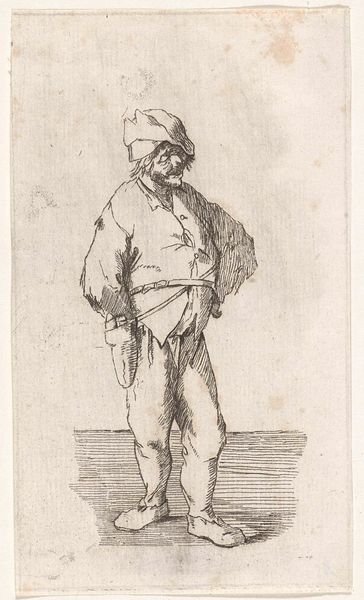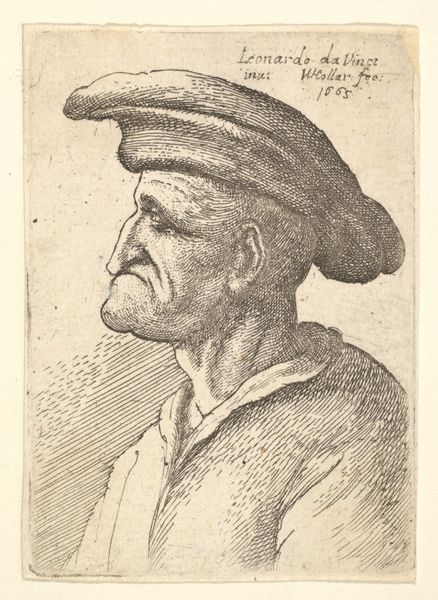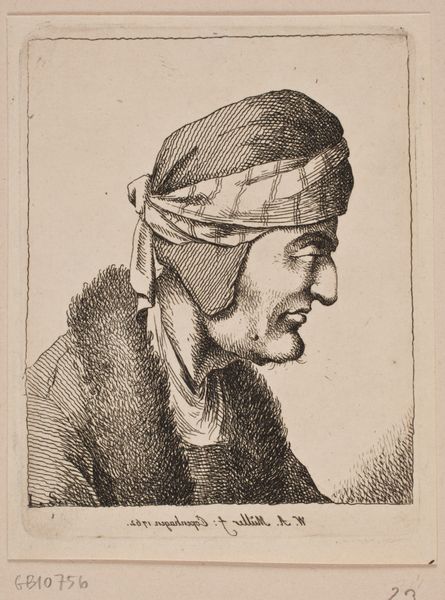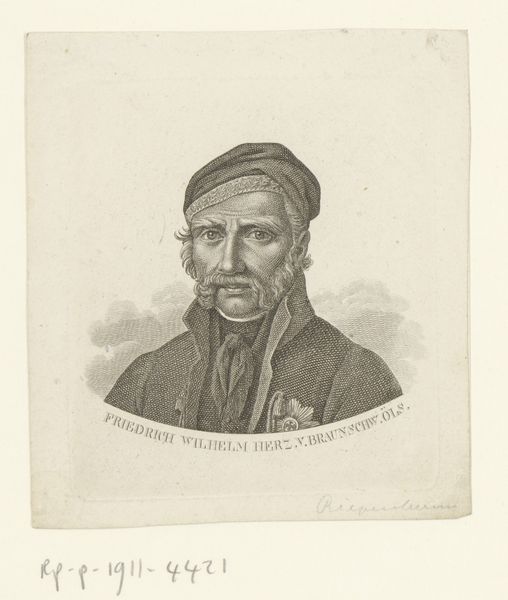
drawing, pencil
#
portrait
#
pencil drawn
#
drawing
#
pencil sketch
#
pencil drawing
#
romanticism
#
pencil
#
portrait drawing
#
realism
Dimensions: height 160 mm, width 128 mm
Copyright: Rijks Museum: Open Domain
Editor: Here we have Willem Cornelis van Dijk’s "Portret van een onbekende man met muts en map onder zijn arm," created in 1850 using pencil. The cross-hatching gives the portrait a surprising weight. What does this drawing evoke for you? Curator: The very act of creating a portrait, even of an unknown man, during the mid-19th century signals something about the changing status of the individual. Portraits were no longer just for the aristocracy, but for a rising middle class, emphasizing individuality. Notice his clothing. Does it strike you as particularly flamboyant or individualized? Editor: Not really. It looks pretty standard for the time, maybe even a bit… unassuming? Curator: Exactly! Van Dijk has seemingly focused on the essence of the individual. Now, think about the institutions around art at this time. Where would this have been shown? Commissioned by whom, and for what public? Editor: Probably not a grand salon. Maybe a smaller exhibition space, or even intended for private viewing? It feels…intimate. Curator: Precisely. This drawing functions as a document of burgeoning self-awareness amongst common citizens. It shifts from the romanticized and toward recording lived experience in a straightforward style. Editor: I never considered how portraiture itself could reflect social change, that is so interesting. I thought it was just about skill, but this captures much more than the person. Curator: Absolutely, even the medium — pencil drawing — democratizes artmaking and collecting, making it more accessible for a wider range of people. Looking at art with an eye toward the society around it can uncover hidden histories.
Comments
No comments
Be the first to comment and join the conversation on the ultimate creative platform.
